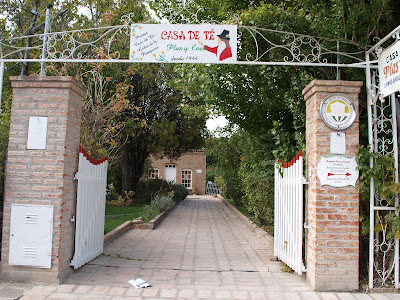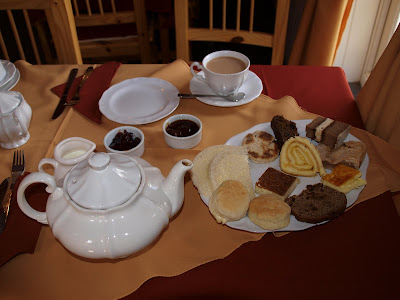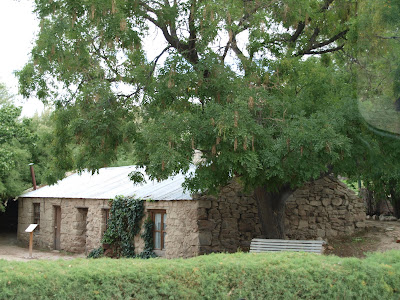While Fernando Magellan could be the first European to see Patagonia and Charles Darwin spent weeks here on his famous journey in the Beagle, it is the Peon from Wales that made the little town of Gaiman defy all odds to be what it is. Known for its vast landscape, low grown Steppa (normally waist height) and occupying one-third of Argentina's landmass, Patagonia is not a desert by nature.
 |
| Flat, Wide and Empty Plain Patagonia, Apr 2010. |
However, the Pampa is a chilly place to live and the remote south is flat, wide and an empty plain. Gaiman is not.
Heading 15KM west of Trelew, after driving through land that seems to the horizon, rows of beautiful White Poplar tree came into view. It reminds me of my Silk Road journey when the bus took me out of Kashgar to the Taklimakan Desert, I saw the same scene with rows of White Poplar tree for the first time. White Poplar tree is heavily used in the desert for stopping sand erosion where it is used to circulate oasis, agricultural land or farm, and road. Here, it seems the whole Gaiman is circulated by the White Poplar tree. So, it is appropriate to call Gaimen, the oasis of Patagonia. When the bus drove through the White Poplar tree, I saw river streams along the road making the breeze feels like fresh Spring. This is not common in Patagonia.
 |
| Water Canals in Gaiman, Apr 2010. |
Not like other part of Argentina that are predominantly inhabited by Italian or Spanish, Gaiman, in the indigeneous Tehuelche means "Rocky Point", is inhabited by Welsh since the 18th century, fleeing their homeland for being repressed for their language and culture. Welsh shows their unbeatable skills in irrigation to make Gaiman an oasis bloom out of no where, probably the only one you can see in Patagonia. Digging through the rocky underground (it is called "Rocky Point"), draining the underground water to make water canals, making irrigation likes never before in Patagonia. Gaiman is self sufficient and was the major production area for Patagonia wheat back in the 18th and 19th century. The elders here still speak native Welsh.
I, the tourist, came here for a taste of the Welsh heritage as it once was and the other main reason - the tea houses (tai te). The tea houses here are still serving up the Welsh cream pastries to people like me, the toursit. When I heard about Welsh pastries, I was already drooling. When I arrived at Casa de Te Play y Coed, I was absolutely joy filled.
 |
| Casa de Te Plas y Coed in Gaiman, Apr 2010. |
Greedily, I order the size for two. Well, there is no size for one. :-), and when the nice Welsh lady put the tray on the table, I was glad that I had a small breakfast and no lunch.
 |
| Welsh tea and pastries at Casa de Te Plas y Coed in Gaiman, Apr 2010. |
I don't have to describe its delicious. If you ever come across a chance to try Welsh pastries, please don't be hesitated! I finished every bit of it! :-), sorry, I don't waste.
I guess I needed a little walk after such satisfaction. Gaiman is a lovely town, even though today it seems the young people have all left, the Y Wladfa (Welsh settlement) which once before can be seen through the old houses built with the Welsh culture along the street.
 |
| The 1st Welsh house built in Gaiman, Apr 2010. |
Gaiman and the Welsh remind me a piece of land called the "Holland Marsh" located north of Toronto in the county of North York. North York has a rocky bottom just like Gaiman. When the Dutch came and settled at North York where no one knows how to live there due to the irrigation issue. The Dutch used their best skills, dig through the rocky bottom, drained the underground water, built the irrigation canals and today the Holland Marsh is covered with miles and miles of veggie farms which supply all the fresh veggie for Toronto and the Ontarion province. I enjoyed the breeze everytime driving through the Holland Marsh. Some called them the good farmers, some said they are very intelligent, I said human as all we are, is the survivor when we think cohesively with nature!